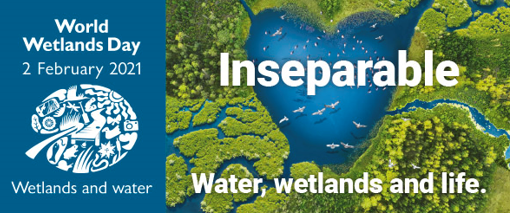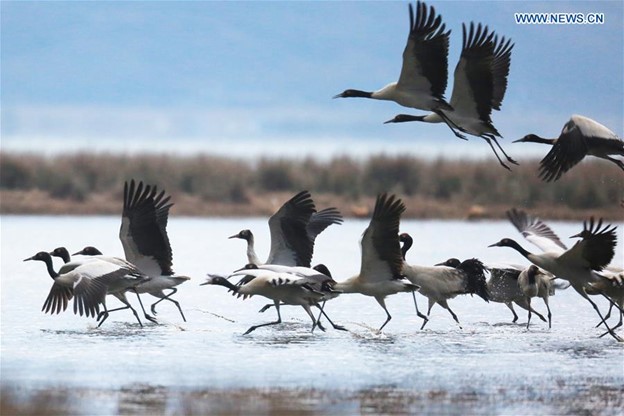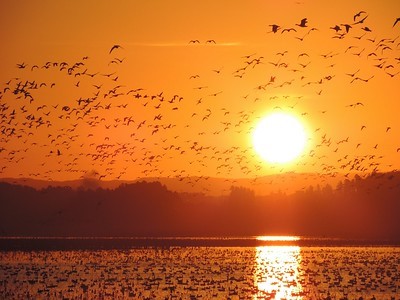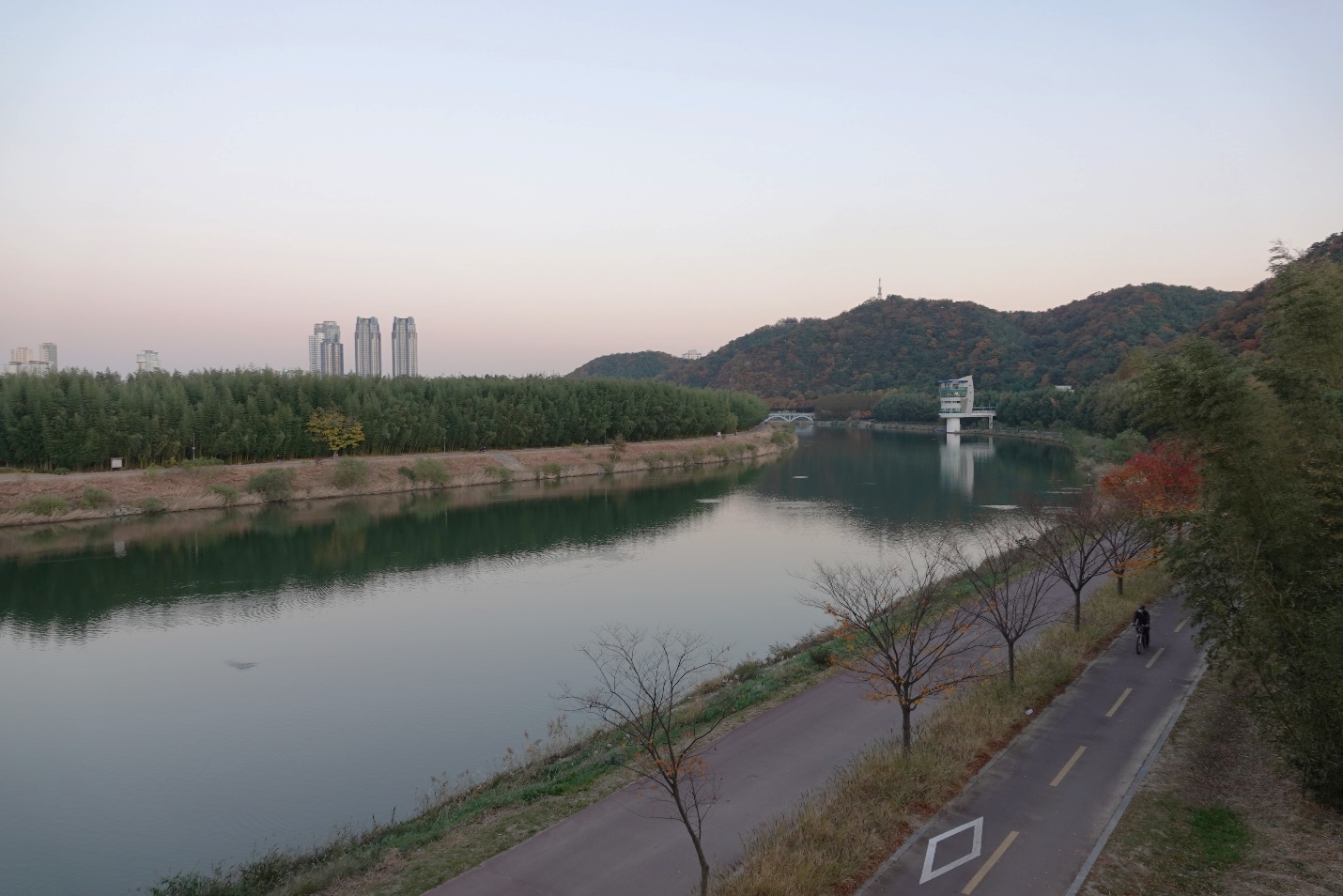
World Wetlands Day, celebrated every year on 2 February, to raise global awareness of the importance of wetlands to the planet, and to commemorate the date of adoption of the Ramsar Convention on Wetlands in 1971 in the city of Ramsar in Iran. This year, the theme of World Wetlands Day is “Wetlands and water”, highlighting the importance of wetlands as the main source of freshwater and call for actions to conserve and restore our wetlands.
Wetlands provide services essential for all lives on land by supplying freshwater. Among the 2.5% of water on Earth which is freshwater, only less than 1% of the freshwater is usable, from which 0.3% is surface water available from rivers and lakes. Taking only 6% of the Earth’s land surface, wetlands not only supply freshwater, but also purify water, provide food through agriculture and aquacultures, sustain billions of people for livelihood, jobs and economy, protect us from storms and flooding, provide habitats for 40% species on the Earth, regulate climate and serve as carbon storage. Wetlands are Nature-based Solutions (NbS) that help us to tackle social, economic and environmental problems.
However, rapid global population growth and urbanization in coastal areas led to the drastic increase in freshwater consumption and loss of wetlands. We are in a water crisis and losing biodiversity. Since 1700s, nearly 90% of world’s wetlands have been lost, resulting in 25% of wetland species and one-third of freshwater species are on the brink of extinction. In the East Asian-Australasian Flyway (EAA Flyway), about 45% of wetlands have been lost, and we had lost up to 65% of tidal flats in the Yellow Sea. The EAA Flyway has the highest proportion of globally threatened migratory waterbird species among all the flyways in the world. We need to take immediate and effective actions to reverse the trend of wetlands loss.
Here we shared some sound examples of freshwater wetlands restoration in the EAA Flyway:
- One of the earliest successful cases of wetland restoration – Caohai National Nature Reserve (EAAF 067) in China
Caohai locates in Guizhou Province of China was a shallow lake in the 1950s, but was mostly drained during 1958 to transform the wetland to farmlands. Realizing the adverse impact of microclimate change due to the dried lake, the government began to partially refill the lake in 1982 and established the Caohai National Nature Reserve (NNR) in 1985. The restored wetland attracted the thousands of migratory waterbirds, in particular, has become a critical wintering site for Black-necked Cranes (Near Threatened). The International Crane Foundation and other organizations worked together with the local government since the early 1990s to improve site management, initiate environmental education, and assist to overcome human-wildlife conflicts. Now Caohai NNR becomes one of the famous bird watching sites in China.

Black-necked Crane on Caohai (Photo by Wang Chunliang/Xinhua via www.china.org.cn)
- Restoring wetland ecosystem and management – Izu-numa and Uchi-numa (EAAF 115) in Japan
Lakes Izu-numa and Uchi-numa are located in northern Miyagi Prefecture of Japan is an important wintering ground for ducks, geese and swans. With a vast area of farmland in the vicinity, the lakes serve for irrigation and retention of floodwater. There was a prolonged inundation after 1970, leading to vegetation change. Fertilizer runoff and an increase of lotus coverage (up to 75% of water area in 2012) driving native aquatic plants to disappear. In 2006, the local government started to manage the vegetation to open up space and transplanting native submerging and floating aquatic plants. Following the eradication of invasive largemouth bass in the wetlands, native fish and mussel species were reintroduced to the site.

Morning flight of Greater White-fronted Geese in Izu-numa and Uchi-numa ©Tetsuo Shimada
- River restoration – Taehwa River in Republic of Korea
Taehwa River situated in Ulsan Metropolitan City which was designated as a Special Industrial District in 1962. Along with industrialization and urbanization, Taehwa River was degraded by channelization, severe water pollution, and low downstream water discharge downstream. In the late 1990s, Ulsan City Government started to restore the river to improve water quality, river cleaning and secure water flow; restoring riverine ecosystem including remove concrete revetment, and restore natural habitats, installing eco-friendly structure such as fish ladders. Wildlife like migratory birds, mammals and fish (salmon) were recorded to return to the river. The river also provides recreational services for citizens.

Taehwa River ©Vivian Fu/EAAFP
- Community participation in to restore wetland – Glenelg Estuary and Discovery Bay (EAAF 091) in Australia
Long Swamp which is part of the Discovery Bay Coastal Park located in south-eastern Australia. It is a large coastal freshwater wetland which contributes flow to the Glenelg River Estuary. The wetland was degraded due to past catchment land-use change and artificial drainage, leading to long-term drying. Restoration began in 2012. Local NGOs and government restored natural landforms which successfully increased the availability, diversity, and connectivity of aquatic habitats and regain the biodiversity value. The project involved local volunteers which proved that community participation is one of the keys to the achievement.

Long Swamp in trail restoration (Photo by Mark Bachmann, via http://natureglenelg.org.au/)
The East Asian – Australasian Flyway Partnership (EAAFP), as one of the Ramsar Regional Initiatives, is working with 39 Partners and other collaborators and supporters to conserve internationally important wetlands, and migratory waterbirds as well as ecosystem services of these wetlands provided to local people in the EAA Flyway. The Partnership has supported Flyway Site Network (FSN), in which there are now 148 Flyway Network Sites (FNS). Wetland management and restoration are necessary for sustaining the ecological functions of the wetlands, which need to be placed in government planning and budgeting, requires resources on implementation, capacity building, monitoring and engaging local communities. The EAAFP work with Partners, site managers, researchers, civil societies, local communities and other stakeholders to ensure the long-term health of our wetlands and wellbeing.
Resources about wetlands and restoration:
IPBES (2019): Global assessment report on biodiversity and ecosystem services of the Intergovernmental Science-Policy Platform on Biodiversity and Ecosystem Services. E. S. Brondizio, J. Settele, S. Díaz, and H. T. Ngo (editors). IPBES secretariat, Bonn, Germany: https://ipbes.net/global-assessment
Ramsar Convention on Wetlands. (2018). Global Wetland Outlook: State of the World’s Wetlands and their Services to People. Gland, Switzerland: Ramsar Convention Secretariat: https://www.global-wetland-outlook.ramsar.org/
Ramsar Convention: https://www.ramsar.org/
Ramsar – Factsheet: What are wetlands: https://www.ramsar.org/sites/default/files/documents/library/info2007-01-e.pdf
Ramsar – Factsheet: Benefits of wetlands restoration: https://www.ramsar.org/sites/default/files/documents/library/bn4-en.pdf
UN Decade on Ecosystem Restoration: https://www.decadeonrestoration.org/types-ecosystem-restoration/freshwaters




